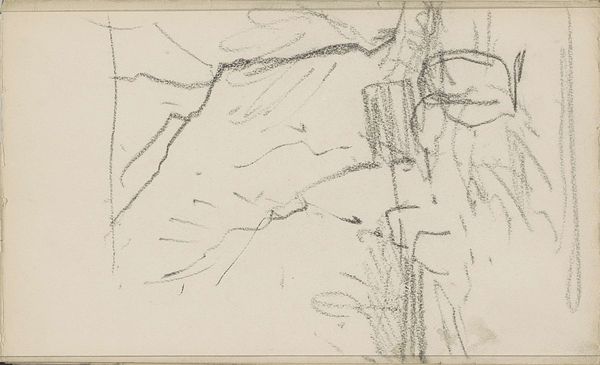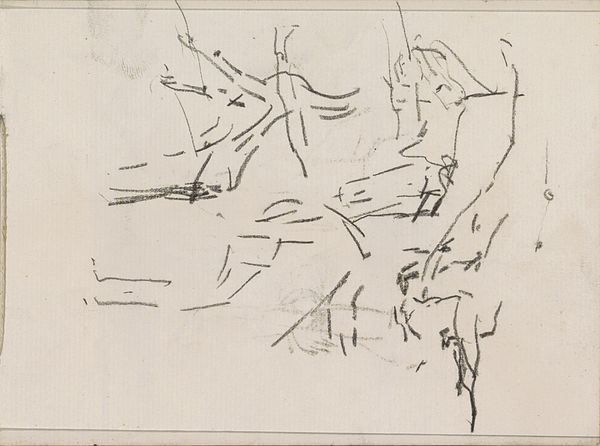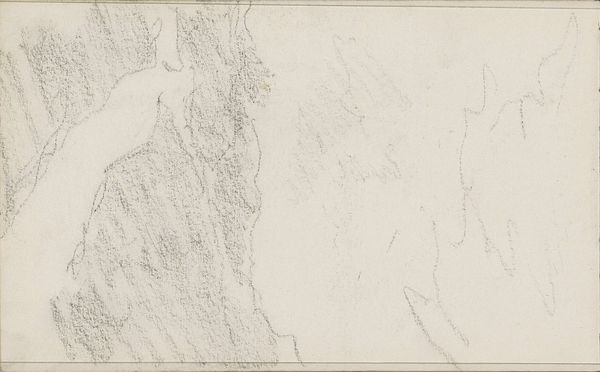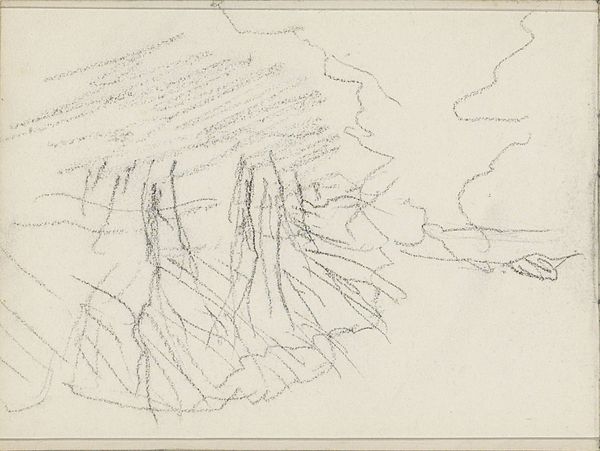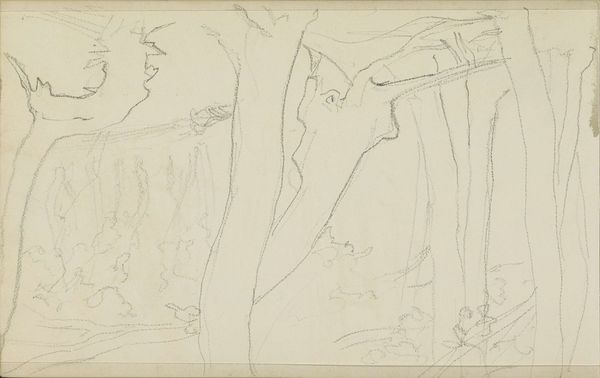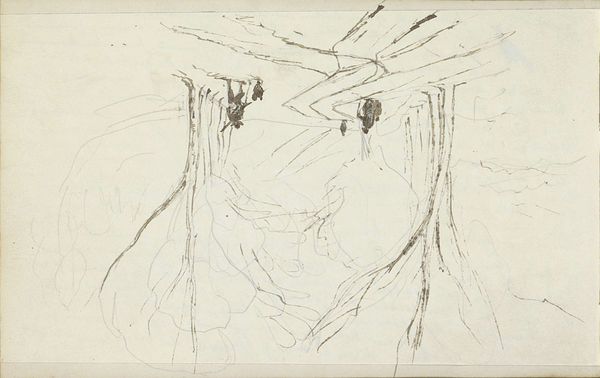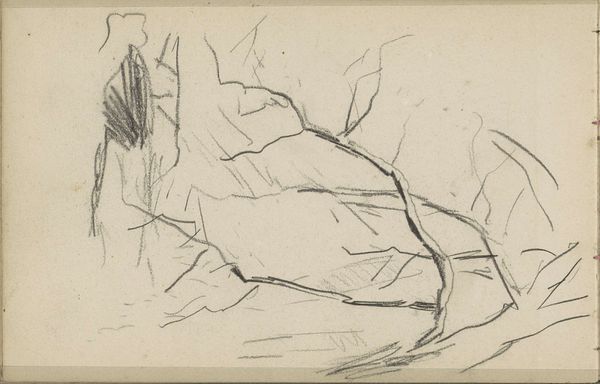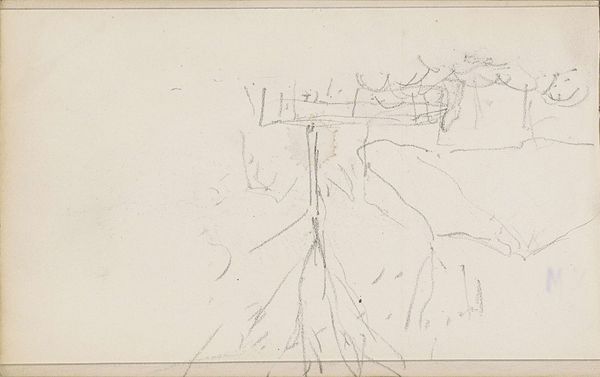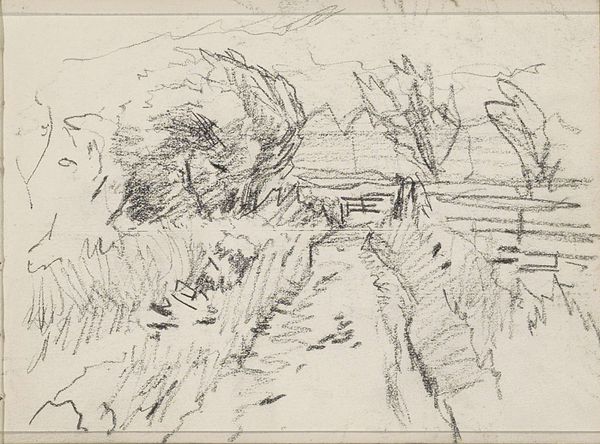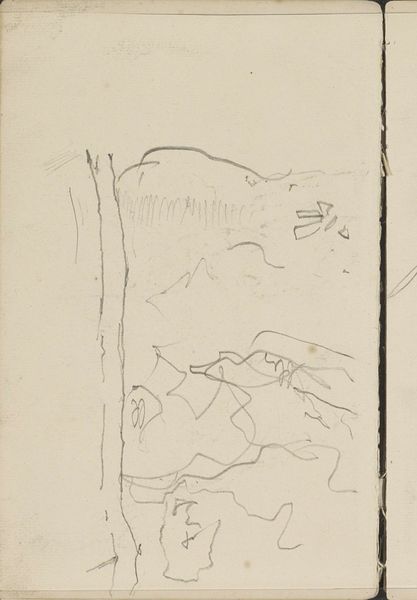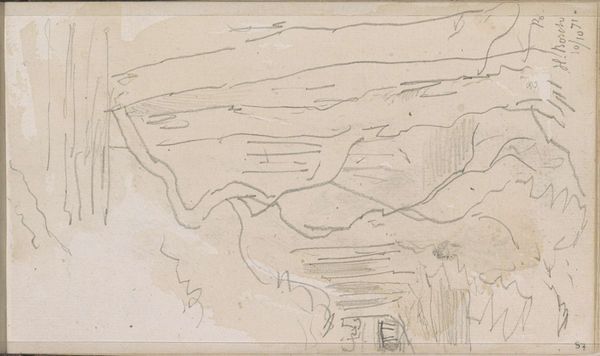
Copyright: Rijks Museum: Open Domain
Curator: Welcome! Today we're looking at "Bomen," or "Trees," a drawing by Johan Antonie de Jonge, likely created around 1920 using pencil on paper. Editor: It's raw. My first thought is: fleeting. Like a captured moment in a personal sketchbook, sketched on the spot, where only some essential features are considered necessary. Curator: That immediacy certainly chimes with broader trends in early 20th-century art. Impressionism embraced that 'snapshot' effect, challenging academic tradition. The turn of the century in Europe, where De Jonge was living and working at the time, saw many artists experiment with this way of capturing the lived, material experience, rather than striving to portray the natural world ‘perfectly’ through a long and careful creative process in their studios. Editor: Trees have been imbued with immense symbolic importance cross-culturally for millennia, though. Do you see that tradition informing his vision? Trees connect the earthly and the celestial; they appear in myths, sacred groves, etc. Do you think it has some bearing here, regardless of it feeling casual or dashed off? Curator: That's an interesting observation. While it's presented simply, the stark representation emphasizes their basic, structural nature and could represent our fundamental ties to nature. At the time, especially during and after World War I, simple returns to nature took on a heightened, poignant importance because of the atrocities of the conflict and rapid modernization. A back-to-basics focus spoke to the need for simplicity during an overwhelming time, though more often in painting than drawing. Editor: I agree that, despite its brevity and minimalism, there's something grounding here. It reminds me of archetypal symbolism: the axis mundi connecting worlds. Even with few lines, that sentiment comes across quite potently. Curator: Perhaps what we are seeing, in essence, is De Jonge capturing a widespread yearning for peace and reconnection, utilizing these simple impressions to channel a longing for the enduring, almost timeless quality represented by trees. Editor: Well, seeing through a historical lens and symbolic weight has undoubtedly reshaped how I perceive what initially appeared as a modest pencil sketch! Thank you! Curator: And for me too. Recognizing that seemingly rapid, preliminary sketches also hold important commentary can lead to insights into greater social conditions.
Comments
No comments
Be the first to comment and join the conversation on the ultimate creative platform.
